
Facade of the Cathedral of Seville
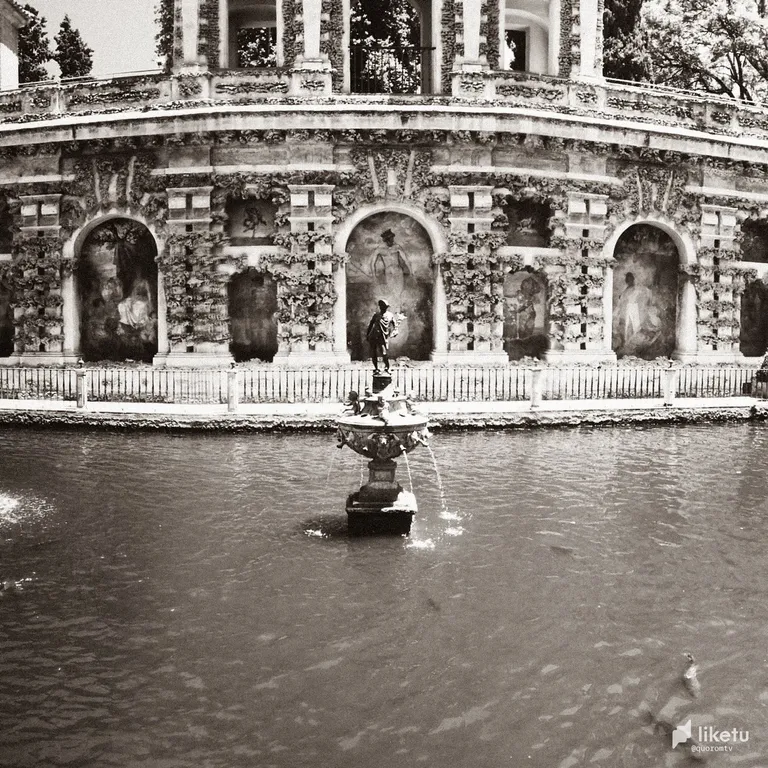
Statue of the god Mars in the Gardens of the Alcázar
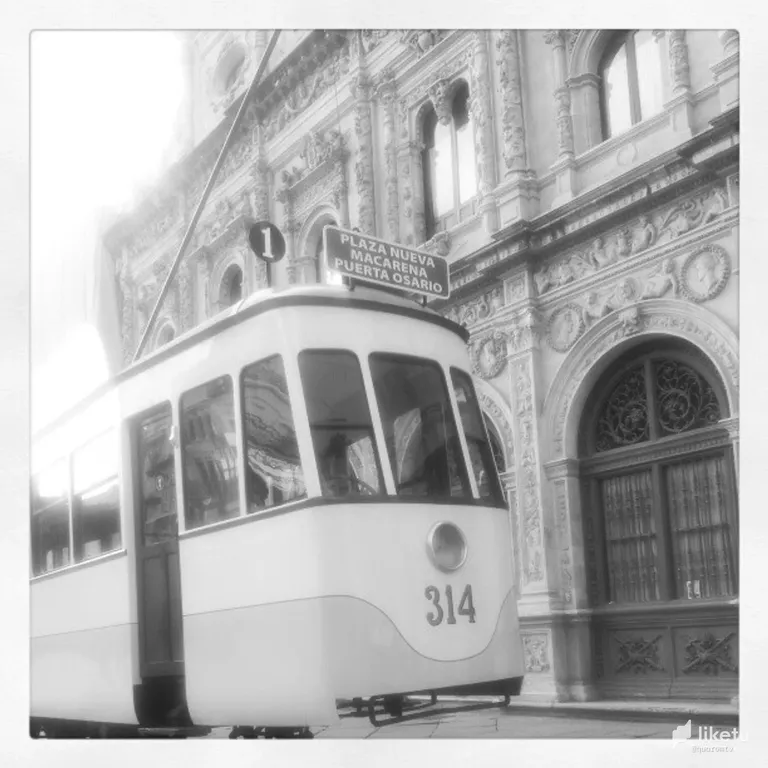
Tribute to the old tram that circulated through Seville during the 20th century
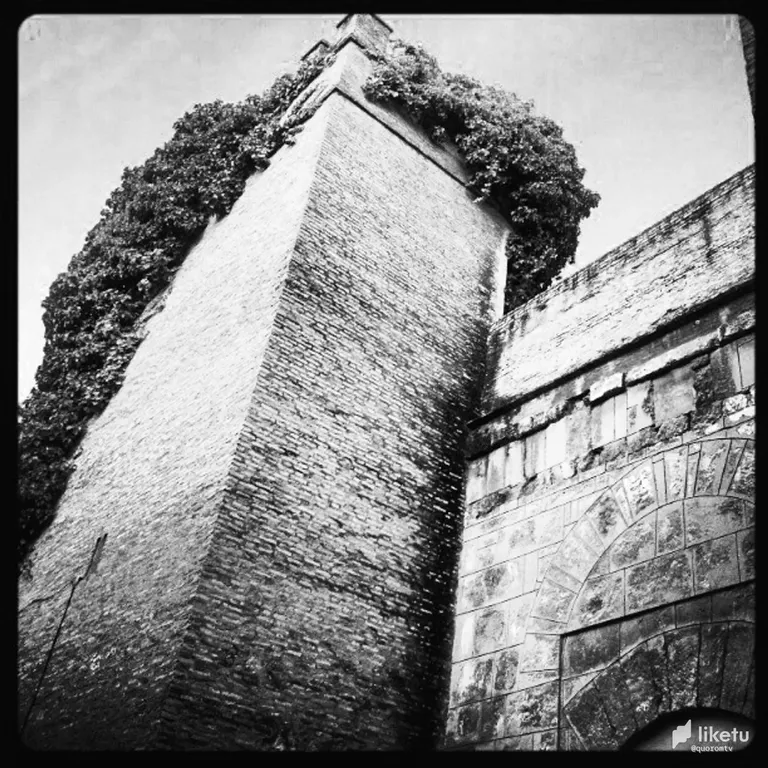
Details of the "Puerta del León" from the "Real Alcázar" wall
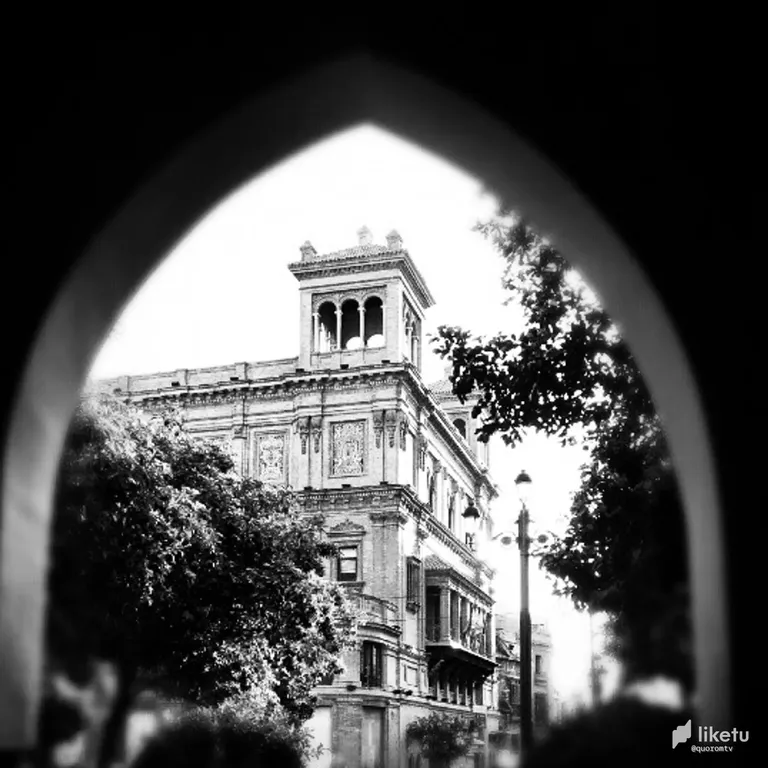
Crossing the Abd al-Aziz Arc, Its name comes from the emir Abd al-Aziz ibn Musa who lived in Ishbiliya (Seville) in 8th Century
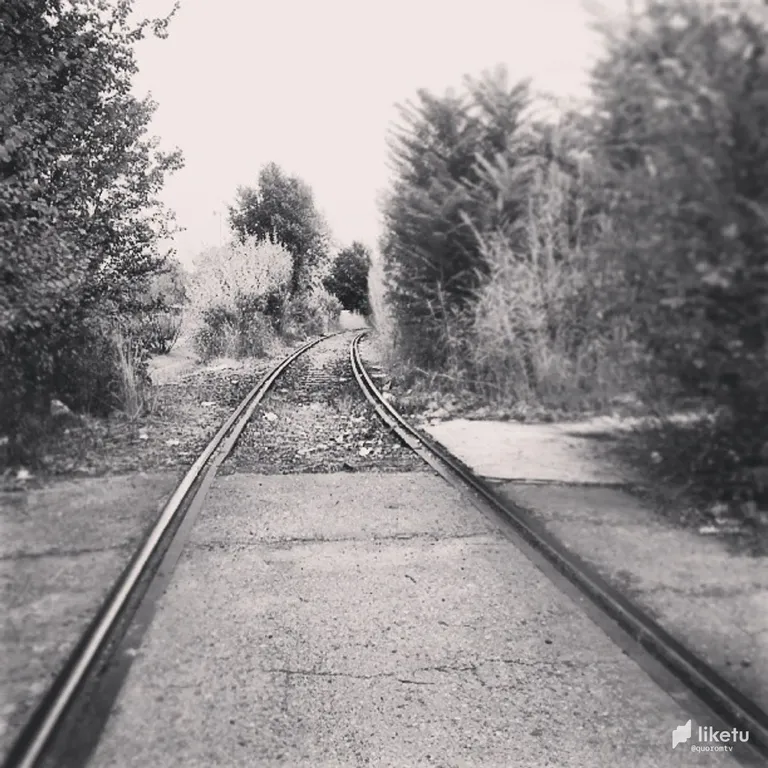
I love this photo, it is one of the sections of the railway that became obsolete during the 20th century. You can walk along the road without fear of being run over!

It's a sunny day in my town, time for a profile pic! Thanks all for read and learn more about my city!
First of all, thank you all very much for the great welcome you gave me yesterday on #Liketu! I'm looking forward to posting pictures of my travels around the world.
Today I want to tell you about my hometown, Seville. A large and ancient city in the south of Spain that has centuries of history, with great cultural and tourist importance. So get ready for a bit of history.
Origin of Seville
The origin of Seville is still confusing, although like so many cities it has its legends; there are those who associate it with the fabulous Tharsis, although the most accepted theory is th****at it was founded by Hercules himself, who would give it to his son "Hispano". From this fact the term "hispalis" would come.
According to the most plausible version, the city was founded by the Iberian tribe of the Turdetans who inhabited the Guadalquivir valley, a territory that corresponded to ancient Tartessos.
The Turdetans called “Spal” or “Ispal” the town they created on an island in the Guadalquivir.
Later it was populated by the Phoenicians, the Greeks and the Carthaginians.
In 205 BC Seville was usurped from the Carthaginians by the Romans during the Second Punic War. For two centuries he participated in the convulsive history that the Roman metropolis experienced. But in 43 BC The city was taken by Julius Caesar who would change its name to "Iulia Romuela" or "Romula", becoming the most important city in the Roman province of Baetica.
Proof of its importance is the fact that, with the arrival of Christianity, Emperor Constantine the Great gave it the episcopal chair, one of the five into which Hispania was divided.
After the fall of Rome it was occupied by the Silingo Vandals until they were expelled by the Visigoths, who made it one of the capitals of his reign.
At this point, Seville experienced one of the most romantic moments of the Visigoth period when Hermenegildo rebelled against his father, King Leovigildo, and besieged the city, diverting the course of the Guadalquivir.
Another memorable event would take place that would become part of the history of the city. During the banquet known as "La Cena de las Velas", the Sevillian nobles blew out the candles and took advantage of the blackout to assassinate the Gothic king Teudiselo.
Although the Gothic capital moved to Toledo, the cultural importance of Seville was maintained with two important characters, San Leandro and San Isidoro. The shield of the city of Seville has as its central figures both bishops together with Rey Fernando III.
In the year 712 the Muslim Abd al-Aziz ibn Mussa took Seville, changing its name from *Hispalis *to the Arabic Isbiliyya, from which Seville derives. But in only 3 years the city became dependent on the power of Córdoba.
When the Caliphate of Córdoba fell, the so-called Taifa kingdoms arose throughout the Peninsula. In Seville, Abu I Qasim took power, which would initiate the Banu Abbad dynasty, giving rise to the Abadi Kingdom of Seville.
Yes, that was the "Good times for Seville" because in 1091 the city was invaded by the Almoravids and a few decades later by the Almohads. During the Almohad domain,** Seville reached its maximum splendor and became the most important city in Spain. At this time the "Torre del Oro" and the "Great Mosque" were built, of which the minaret, "La Giralda", is still preserved.
On November 23, 1248, after a long siege, Seville was conquered by the Castilian-Leon Rey Fernando III, also called "El Santo", making it one of the capitals of his kingdom.
In the 16th century, the most important buildings in the center of Seville were built, the Cathedral, "El Archivo de Indias", the Town Hall, "the Audiencia" and "La Casa de la Moneda", the University was created and the first printing press of the kingdom of Seville was installed.
At this time the population of the city reached 150,000 inhabitants, but its splendor was not complete since it failed to balance its accounts due to the tough competition presented by Florence, Genoa, Lisbon and the Netherlands.
To the expected economic catastrophe was added the demographic catastrophe caused by the plague of 1649 that killed half of its population, so that Seville would not recover until the 19th century.
During the counter-reformation in Seville, 73 convents were installed, from whose religious environment the painters Valdés Leal, *Murillo *and Zurbarán, and the sculptors Martínez Montañés and Juan de Mesa would emerge. The vast majority of the churches, altarpieces and images of the famous Holy Week that is celebrated every year in the capital date from this period.
In 1717 "La Casa de Contratación de las Indias" moved to Cádiz, with Seville losing much of its economic and political importance.
Rising stronger than ever
In 1728,** the Royal Tobacco Factory was installed in Seville**, which would have such importance for the future of the city. A century later the city began an expansion supported by the construction of the railway.
During the 19th century, Seville was a fundamental protagonist in the ups and downs of national politics: the War of Independence, the revolutionary "junta of Narváez y Córdova", the uprising against Espartero, the riots due to the O'Donnell coup, the Revolution of 1868 and the Cantoral Revolts of 1873. It was also an important nucleus of anarchism in the CNT.
In the 20th century, Seville organized the Ibero-American Exposition of 1929, a celebration that would notably modify the appearance of the city.
Before the Civil War, Seville experienced great anticlerical movements. During the Civil War it fell from the first moment on the national side and lived through the war as a rearguard city.
Once the war was over, Seville suffered two tragic events: the explosion of the Santa Bárbara powder magazine on March 13, 1941 and the great flood of November 1, 1961.
The Universal Exhibition of 1992 was another of the events that would provide another great boost to Seville; new infrastructures prepared the capital for the arrival of the 21st century.
Today, Seville is one of the most important cities in Spain.
For this reason, I am going to show you some photographs that stand out from the city, so that you can soak up its roots in detail.
Some text are from Guia de Sevilla, source: https://www.guiasevilla.com/historia-sevilla
For the best experience view this post on Liketu
So much history! Well done.
Thank you very much, @rick-scarrow! Always love how foreigns are astonished meanwhile they walk around my town. Did you stayed on Seville?
I reside in Canada and have never been to Spain. The architecture is stunning where you live. Where I live, the beauty is in nature more than the buildings and the history of them.
In Spain we have impressive natural landscapes, but yes, Canada stands out a lot in its nature. It is certainly a country worth visiting!
I believe it! Lucky we are to live in such photo friendly lands. Great chatting with you. Cheers!
Source of potential plagiarism
Direct translation without giving credit to the original author is Plagiarism. Repeated plagiarism is considered fraud. Fraud is discouraged by the community and may result in the account being Blacklisted.
Guide: Why and How People Abuse and Plagiarise
Please note that direct translations including attribution or source with no original content are considered spam.
If you believe this comment is in error, please contact us in #appeals in Discord.
Thanks for the warning, @hivewatchers, didn't know I couldn't take some reference from external sources. Going to edit the article with the original source.
Congratulations @quoromtv! You have completed the following achievement on the Hive blockchain and have been rewarded with new badge(s):
Your next target is to reach 50 upvotes.
Your next target is to reach 100 upvotes.
You can view your badges on your board and compare yourself to others in the Ranking
If you no longer want to receive notifications, reply to this comment with the word
STOPTo support your work, I also upvoted your post!
Check out the last post from @hivebuzz:
Support the HiveBuzz project. Vote for our proposal!